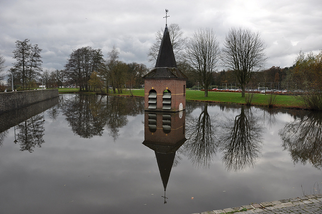1ST INTERNATIONAL CONFERENCE ON MICROFLUIDIC HANDLING SYSTEMS SAMPLE EXTENDED PAPER AND INSTRUCTIONS FOR EXTENDED PAPER PREPARATION
J.C. Lötters1,2,3 and G. Urban4
1 The Technical Manuscript Design Group, City, Country
2 University of Twente, Transducers Science and Technology, Enschede, The Netherlands
3 Bronkhorst High-Tech BV, Ruurlo, The Netherlands
4 University of Freiburg, Freiburg Institute for Advanced Studies, Freiburg, Germany
ABSTRACT
The paper should start with a brief abstract of approximately 100 words summarizing the main goals, developments, and achievements of the work. Consider that the abstract may be included in abstract search databases. The abstract should be preceded by the above title.
KEYWORDS
Selected keywords relevant to the subject
INTRODUCTION
Paper Length
Your paper is expected to have a total length of four (4) pages. Longer papers will not be accepted. Note that this sample abstract is a representative of the expected paper length.
The manuscript that you prepare will be used as it is received. Please make sure that you do not have double images and that all tables and chart lines are heavy and distinguishable.
General Layout
As the Conference proceedings will be published in A4 format, set up the layout on your PC/Mac/workstation in this format (29.7 cm high, 21 cm wide). In this format, define 1.75 cm wide left and right. The top and bottom margin should be 2.5 cm.
Define a two-column layout, with a space of 0.5 cm between columns. The title/author/affiliation section should be centered above both columns. NO blank lines between authors and institutions. Adjust the two columns on the last page to equal length, as far as possible. All paragraphs are to be indented 0.6 cm.
Text Formatting
Please use Times New Roman throughout the entire manuscript, from title, authors, affiliation, headers, and sub-header, to figure and table captions, and references. To achieve a unified look across the proceedings, the following formats should be used as illustrated also by this sample manuscript:
• TITLE: 12 POINTS, BOLD, ALL CAPITALS;
• Authors: 12 points, italic;
• Affiliation: 12 points, regular;
• HEADINGS: 12 POINTS, BOLD, ALL CAPITALS, WITHOUT NUMBERING, WITH 0.6 CM INDENT;
• Sub-Section headings:
11 points, bold, without numbering, with 0.6 cm indent;
• Text body: 11 points, regular; all paragraphs indented 0.6 cm;
• Figure captions: 10 points, italic;
• Table captions: 10 points, italic;
• References: 11 points, regular, numbered.
CREATING A PDF
After creating your manuscript you must convert it to a PDF. If you do not convert your manuscript to a PDF, your paper will not be accepted. Please make sure that you do not have double images and that all tables and chart lines are heavy and distinguishable. We are requesting high resolution (300 dpi) photos and images only. The Technical Digest is printed in black and white. You are responsible for reviewing your PDF to ensure it looks as it did in the source file you provided. Pay close attention to special characters, as these may not convert correctly.
TEXT
see continuation of instruction on page four
TEXT
TEXT
TEXT
FIGURE AND TABLE FORMATTING
All figures and illustrations should be in high resolution (300 dpi) and should be placed as close to their mention as possible. Each figure should be accompanied by a numbered caption, as shown in Fig. 1, placed right below the figure being described. All labels within the figure frame should be in font 10 or larger. Please ensure that all labels, arrows, lines, and other graphical elements superimposed on schematic drawings and micrographs print with sufficient contrast. Figure 2 shows a photograph with unfavorable resolution (72 dpi) and low contrast.

Figure 1: The caption should be placed after the figure.

Figure 2: Reflection on life, originally shaped by Rodin: rendering with low resolution (75 dpi), unfavorable size, and other deficiencies.
Tables should span one column and should be preceded by a caption. Table 1 illustrates a possible design. Design details are left to the authors.
Table 1: Number N of abstracts submitted and number M of submitting countries.
Region | N | M |
Americas | 212 | 3 |
Asia/Oceania | 250 | 9 |
Europe/Africa | 166 | 20 |
Total | 628 | 32 |
If a table or figure is too wide to be contained in a single column, extend it over both columns, preferable at the top or bottom of a page.
Do not use very thin lines (hairline rules) in any of your Illustrations, Figures, Charts and Tables. All lines need to be 1pt rule or higher. Line drawings must be made in black ink. Shading is permitted.
EQUATION FORMATTING
When numbering equations, enclose numbers in parentheses and place flush with right-hand margin of the column, i.e., with appropriate punctuation.
-1 ≈ei22 7 (1)
REFERENCE FORMATTING
In the Reference section of this sample manuscript, this is illustrated for contributions to conference proceedings [1], journals [2], and books [3].
Do not use headers or footnotes. Rather write your text to include all essential ideas and to be free from material of low importance. If you have no other option and must us a footnote, number the footnotes separately in superscripts1. Place the actual footnote at the bottom of the column in which it is cited. Do not put footnotes in the reference list or exceed the margins limits[4].
REFERENCES
[1] K. Aratani, P. French, P. Sarro, R. Wolffenbuttel, S. Middelhoek, “Surface Micromachined Tuneable Interferometer Array”, Digest Tech. Papers, Transducers‘93 Conference, Yokohoma, Japan, June 7-10, 1993, pp.678-681.
[2] W. Ko,M. Bao, Y. Hong, “A High Sensitivity Integrated-Circuit Capacitive Pressure”, IEEE Trans. Electron Devices, Vol. ED-29, pp.48-56, 1982.
[3] S. Timoshinko, D. Young, W. Weaver, “Vibration Problems in Engineering”, 4th edtion, John Wiley and Sons, 1974.
[4] Y.Z. Wang, Z.Q. Li, J. Luo, “Sample Paper – Manuscript Preparation Guidelines for Transducers 2011”, Transducers ’11, 2011
CONTACT
* J.C. Lötters, J.C.Lotters@utwente.nl
